Distinguished Critique: "Batman: A Lonely Place of Dying" Review
The third Robin debuts in a tale that delivers catharsis in the face of overwhelming tragedy
—by Nathan on May 13, 2023—
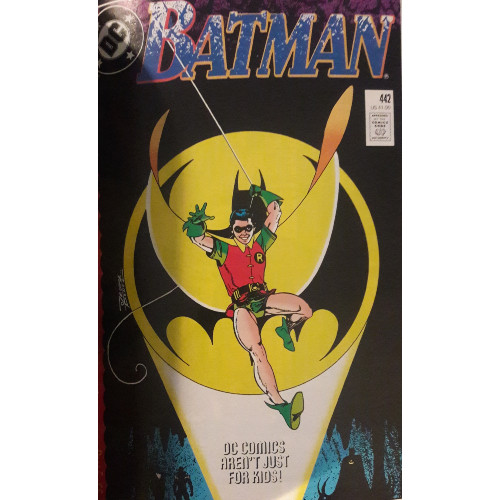
Jason Todd was dead
In Jim Starlin and Jim Aparo’s classic “A Death in the Family,” Jason Todd, the second Robin, was beaten half to death by the Joker, who finished him off (with a little help from Batman’s fans) inside an exploding warehouse. Fans called in, voting whether or not to save or condemn the Boy Wonder. At the saga’s end, Batman was left without a sidekick and very little in the way of saying he’d actually avenged Jason’s death.
But, as history shows, without Robin, there really is no Batman. At least, not a whole Batman.
Shortly after Jason’s demise, DC concocted a story to add a new member to Batman’s gang of aspiring teenage sidekicks. The artist who killed Jason Todd joined the writer who destroyed the DC multiverse to introduce a third Robin, someone who would be different from Dick Grayson and Jason Todd both and, hopefully, would be kept away from the receiving end of any physical crowbars (or proverbial fan-enthused beatdowns) for the foreseeable future.
“A Lonely Place of Dying”
Writer: Marv Wolfman (with co-plotting by George Perez)
Pencilers: Jim Aparo, George Perez, Tom Grummett
Inkers: Mike DeCarlo, Bob McLeod
Colorist: Adrienne Roy
Letterer: John Costanza
Issues: Batman #440-442, New Titans #60-61
Publication Dates: October 1989-December 1989
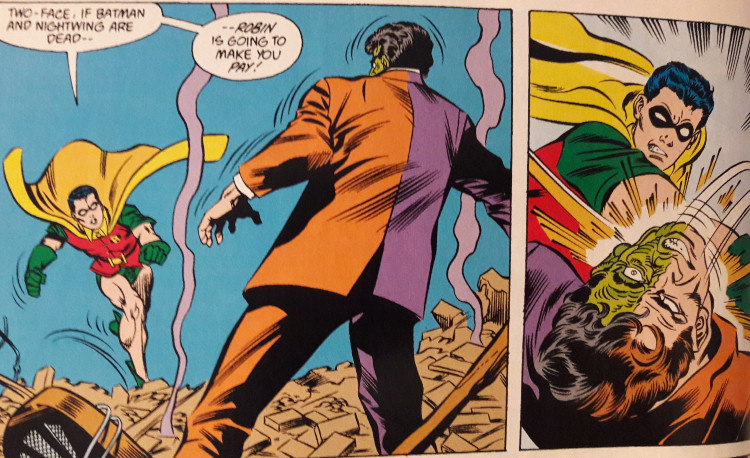
Note: save for some minor edits, this blog is the same as it was when I originally posted it to Hubpages
From the jump, Wolfman makes it clear that Tim Drake, our burgeoning third Robin, is a far different young man from his predecessors. He’s not an orphan, for one. We don’t meet his family, but Tim’s father Jack would go on to play an important role in later stories (eventually dying in Identity Crisis). And Tim is also ridiculously smart–a core characteristic that shapes his journey here.
Unlike the past two Robins, Tim isn’t discovered or adopted by Bruce Wayne; he’s the one who finds Bruce. An amateur sleuth, Tim’s whole shtick is figuring out the identity of the man behind Batman’s mask, digging through clues to discover just who the Batman really is. Wolfman gives the young man agency the prior Robins didn’t possess at first–here’s a boy who strikes out on his own instead of allowing tragedy to shape his fate.
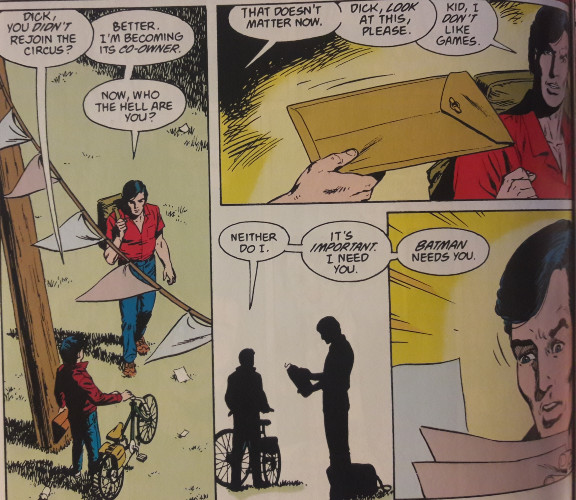
His introduction is different, refreshing. Even as a reader who’s never read the first appearances of either Dick Grayson or Jason Todd, in or out of costume, I found Tim’s introduction to Batman’s universe unique. He’s not a boy in need of a father. But he’s still a boy in need of a purpose. And unlike Dick or Jason, Tim isn’t just pulled into the role by simply being juxtaposed with Batman or just claiming the role as some sort of adoptive birthright. Instead of letting casual relational gravity yank him in, Tim places himself, though unexpectedly, in position to earn a place at the Bat’s table.
Fantastically, Wolfman interlaces Tim’s story with the legacies of both Dick and Jason. Dick, now going by Nightwing and serving as team leader in the new Teen Titans, is initially approached by Tim encouraging him to become Batman’s sidekick again. It struck me, reading this thirty-plus years after its debut, that “A Lonely Place of Dying” doesn’t approach Tim’s character from the “new Robin” angle. At least not explicitly. The boy isn’t concerned with becoming Robin, hence his reason for targeting Dick and attempting to convince the young man to take up his rightful place by Bruce’s side again. I assume most readers figured Tim would grace the Robin mantle by story’s end, but Wolfman gracefully weaves in Tim’s involvement without beating you senseless with the idea that he will become Robin.

Dick’s story is primarily told in the Wolfman/Perez/Grummett New Titans issues, and though they tether into the larger “Lonely Place of Dying” plot, they’re particularly introspective in creating a Dick/Tim dynamic. Wolfman engagingly connects Tim’s origin to Dick’s; Tim reveals he attended the show where Dick’s parents were murdered, shortly before the first Robin debuted. Wolfman’s plot here gives Tim an additional incentive for becoming Robin later, drawing inspiration from Dick’s origin, even if that notion is largely implied in the pages as the story develops.
Jason’s ghost lingers over the entire story, and though I can’t say Tim is ever in competition with the young lad’s memory, he does face Jason’s specter as an internal adversary of sorts. Batman, particularly haunted by Jason’s untimely death at the Joker’s hands, is in a discouraged, dark state of mind as the story unravels. He’s off his game, troubled; Tim’s plan for Dick’s return as Robin, in fact, is steered towards pulling Batman out of this dark place. “Batman needs a Robin” becomes a mantra for the story. Yet for every step Tim takes, Bruce is there to ease back the throttle. He struggles with accepting Tim, even after Tim becomes more at ease with assuming the mantle. Having so recently lost a sidekick to a brutally violent death (thanks, DC Comics fans), Bruce is logically wary at accepting more help. It’s up to Tim to persuade the Dark Knight Detective otherwise, without resorting to the same showboating, arrogant tendencies which landed Jason in the Joker's sights.
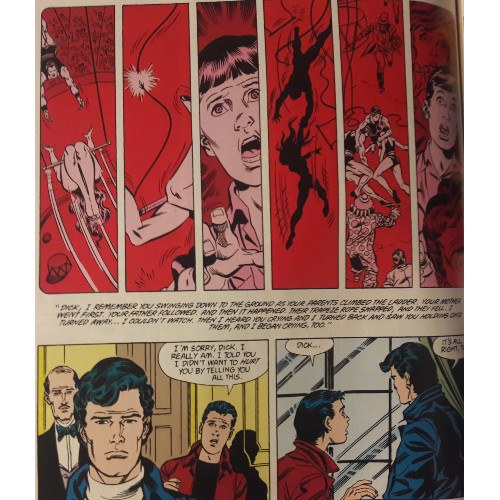
“Batman needs a Robin.” It’s a theme which weaves itself throughout the entire arc, whether through spoken dialogue or thematic elements. Wolfman creates a new plot using villain Two-Face to capitalize upon this idea, and though the plan ends up being rather straightforward for a Batman comic, it nevertheless gives Tim the impetus he needs to become Robin. Certainly, some fans may see this as obvious–of course, Tim needed to debut against a supervillain or engage a threat which would, essentially, force him to don cape and cowl as the third Robin. It’s not something I took too much issue with. Yes, the route is obvious, but what other route would there be?
To Wolfman’s credit, he effectively teases Tim’s dramatic transformation without bludgeoning the reader, meaning that Tim’s eventual, yet reluctant, first appearance as the Boy Wonder feels more natural than narratively coerced. Tim’s reticence throughout the previous issues make his change that much sweeter, as he battles through his own internal demons and Jason’s shadow to become the new Robin.

As much a story as this is about Robin, Batman remains a somewhat sidelined focal point throughout the arc. He’s distressed, feeling a tad rusty. We see a Batman whose world has been rocked emotionally, and he’s struggling to maintain forward momentum. Gotham still needs a protector, so he keeps going out at night, but the emotional toll weighs heavily upon his shoulders. Wolfman wonderfully tugs at his emotions, creating a distant hero shrouded in the folds of tragedy and humanity as much as he’s enshrouded in his actual cape. One particularly well-defined scene sees the Dark Knight perched on a gargoyle. As text boxes deliver narration from a different character, he wordlessly broods.
Bruce is a man awash in anguish, and fantastically, his pain is apparent even when a potential solution is presented. Wolfman deepens the tension by extrapolating his wrestling over Tim’s new role, sidelining Batman’s desire for wholeness with fear over the boy’s potential death. “Batman needs a Robin,” but at what cost? “Batman needs a Robin,” but is his need greater than a young man’s life? Surprisingly, nowhere does Wolfman discuss Jason’s recklessness or the behaviors which led, in part, to his untimely death. In the face of loss, Batman simply considers the purity of Jason’s young life, horrifically stolen.
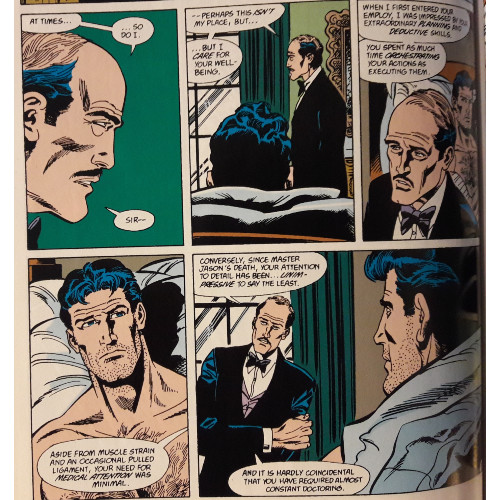
“A Lonely Place of Dying” feels like a misnomer of a title. Funnily, “A Death in the Family” did little to foreshadow Jason’s actual death at the Joker’s hands. Likewise, a story titled “A Lonely Place of Dying” contains little death...unless, perhaps, we’re considering Bruce’s solitary agony and a slow, internal death by a thousand emotions. Regardless, by this story’s end, we’ve actually reached a place of life: the rebirth of Robin, though not a physical resurrection. Tim, despite his and his troubled mentor's fears, assumes the mantle of his predecessors...and in becoming Robin, transforms into a phoenix rising from the ashes of the recent past.